A YEAR OF UNFULFILLED HOPE
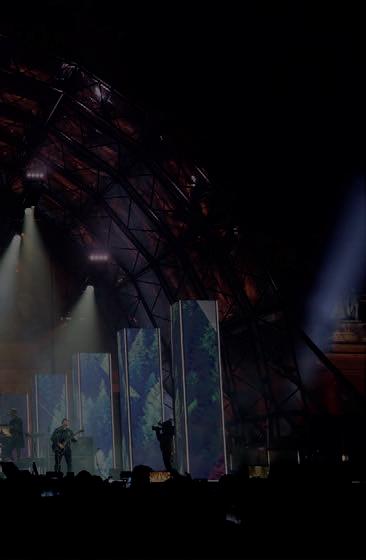
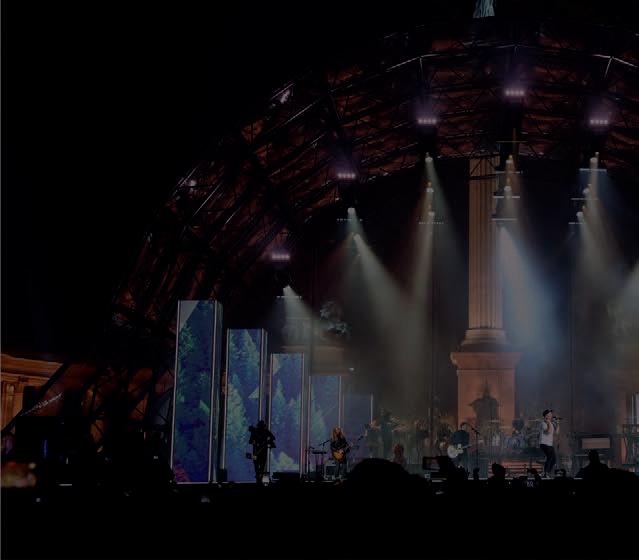
THE PANDEMIC IS STILL WITH US BUT LIFE GOES ON…



SEE PICTORIAL REVIEW ON pages 02-03


Recovery and Slowdown
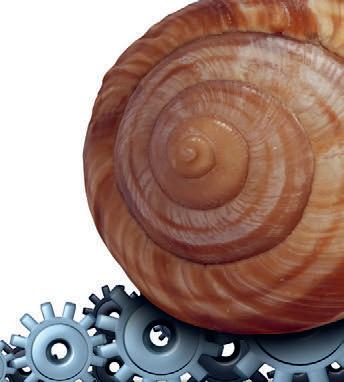
The trajectory of the Hungarian economy in 2021 was more favorable in terms of GDP growth than expected in the budget for 2021 amended at the beginning of summer. At the same time, equilibrium conditions turned out to be much worse than planned, with inflation and the general government cash deficit soaring, the forint weakening and the external balance turning into a significant deficit, the latest summary of GKI Economic Research Co., published in December, states.


see analysis on page 10

2021: A Year of Challenges







The Szivek family grows grapes and crafts wines in Kesztölc, at the easternmost tip of the Neszmély wine region (northwest of Budapest) in a special terroir, at the foot of the Pilis Mountains. The winery cultivates mainly white varieties. Some of its parcels are bio-certified and practically all the vineyards are farmed organically.

see article on page 14

2022/I HUF 1710 EUR 6
january


The pandemic took a heavy toll of fatalities in Hungary by early January. Mass vaccination got under way with jabs for healthcare workers in the first month of the new year with 80,000 doses of Pfizer vaccines having arrived at the end of 2020.

march
Due to the worsening pandemic situation, the Hungarian government ordered all shops, with the exception of grocery stores, drugstores, pharmacies and gas stations – as well as all services – to be closed for a two-week period beginning March 8.
february
The Visegrád Group, a cultural and political alliance of the Czech Republic, Hungary, Poland and Slovakia, celebrated its 30th anniversary. It was formed by Czechoslovakia, Hungary and Poland in the Hungarian town, Visegrád on February 15, 1991.
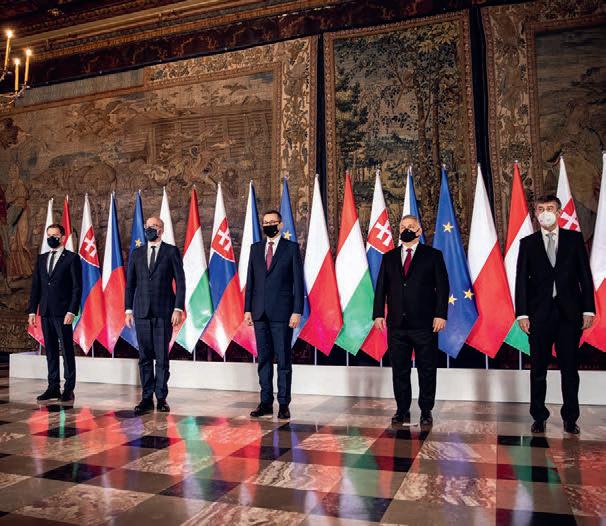
april
Despite the world record number of deaths per 100,000 inhabitants, the Hungarian government decided to ease lockdown measures, like opening the terraces, on the apropos of four million citizens being inoculated against the coronavirus infection.

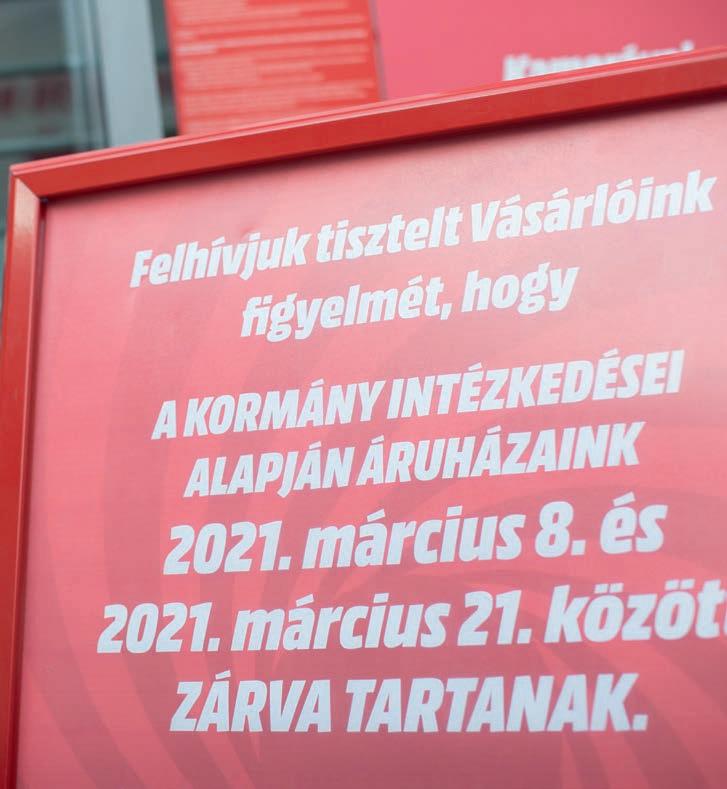


The 2020 European Aquatics Championships (postponed due to the COVID-19 pandemic) took place in Budapest in May 2021. Hungarians finished 5th on the medal table with five golds, including a double victory in the women’s 400m individual medley.

2
photo by DEPOSITPHOTOS.COM, PRIME MINISTER’S PRESS OFFICE/ZOLTÁN FISCHER, TRISTAN FEWINGS/GETTY IMAGES, DÁVID HARANGOZÓ, ISTVÁN DERENCSÉNYI, TAMÁS VARGA, JÓZSEF WÁGNER CSAPÓ, HUNGARIAN GRAND PRIX
may
november
The OneRepublic was the headline act at the MTV World Stage Hungary concert on November 13 at Heroes’ Square in Budapest. This final event on the MTV Music Week was held on the eve of the 2021 MTV EMA Global Music Festival broadcast worldwide.
december

French President Emmanuel Macron paid a one-day visit to Budapest in December to attend a meeting of the Visegrád Four Group (V4) prime ministers. He also held discussions with the Hungarian president and PM as well as opposition politicians.

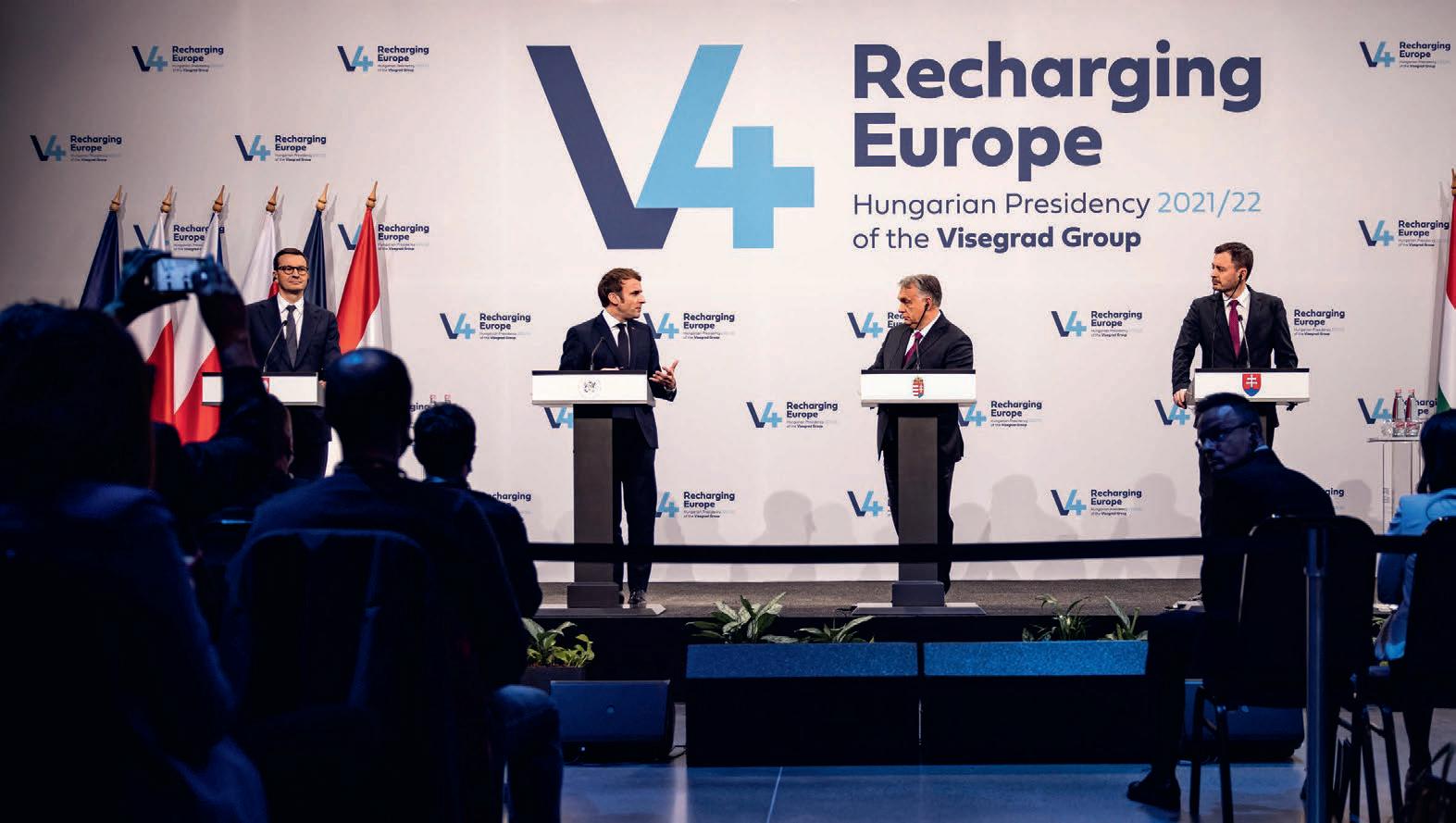
october
The 'World of Hunting and Nature Exhibition' international event took place on 75,000 square meters in eight pavilions at the HUNGEXPO Exhibition and Conference Center in Budapest with several related programs held at locations outside the capital.


september
Pope Francis paid a short visit to Budapest on September 12 to celebrate the closing mass of the 52nd Eucharistic Congress after briefly meeting with Hungarian state and church leaders. In the afternoon, he left for a three-day visit to Slovakia.

june
Despite Hungary producing one the highest fatality rates per population, the government allowed Puskás Stadium in Budapest to be filled with spectators for matches of the European Football Championship postponed to 2021 because of the epidemic.


august
Fireworks have long been a traditional event on the August 20 holiday. This time, the government prepared a gigantic, and the most expensive ever, display for the founding of the state, with light shows along the Budapest stretch of the Danube.

july
Top seed Yulia Putintseva of Kazakhstan won the singles title at the USD 235,000 WTA Hungarian Grand Prix women's clay court tennis tournament at the Római Tennis Academy in Budapest. The tournament returned to Hungary after seven years abroad.

3
2022/I | DIPLOMACY & TRADE | www.dteurope.com
letter from the publisher
The year 2021 did not turn out to be what mankind was secretly hoping it would – the pandemic is still with us, flaring up from time to time. In Hungary, the year began on an upbeat note, though: the arrival of the first shipment of Pfizer vaccines allowed the healthcare staff to be inoculated and by early summer, all those who wanted were able to receive the first jab of their choice.
As you can see in our pictorial review, people in Hungary did their best to combat the pandemic as much as they could and only a few events with mass attendance were held as the government exempted these from the general epidemic rules. This month, the analysis of international affairs is also about the past year and the conclusion is likely to be overall negative – the most important outstanding issues have not been solved yet, and in a number of questions we cannot really see the light at the end of the tunnel either. More continuity than discontinuity in the U.S., nice speeches and outlandish ideas in the area of climate change, the end of the Merkel era, Brexit complications, intensifying tensions between Russia and the West over Ukraine, continuing Chinese expansion efforts – all these and other issues contribute to a complicated world order. Our business page covers an economic research study, which says recovery from the crises caused by the pandemic was achieved in 2021 in GDP production but the huge deficit and the weaking forint pose a lot of challenges for 2022. Tourism is far from full recovery but, as the head of the country’s top tourism agency explains, domestic bookings in the summer of 2021 set a new record –especially in the countryside.
This month, WittyLeaks is authored by the Slovenian ambassador who successfully ‘drafted’ fellow diplomats – 21 teams altogether – to participate in last year’s running festival in Budapest. As he explains, this was not his first attempt during his international career to get colleagues on board for a diplomatic run.
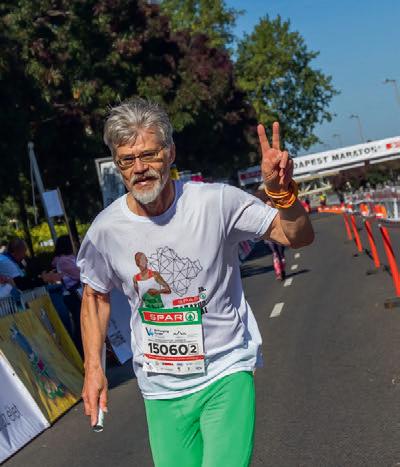
In line with the other articles, our wine page also looks back to 2021. A distinguished viticulturist talks about the difficulties caused by the drought last year and how they managed to compensate for loss in quantity in the 2021 vintage on a special terroir in Kesztölc, northwest of Budapest. You can also find out what made him say that – given the 2021 harvest – “there is always something new to learn.”
This year will be pivotal on so many levels for our local and international communities. Economically, politically, socially as well as environmentally, there are intermingled challenges to deal with. So, with economic growth, political stability, social tolerance and environmental care, we look forward to 2022 to bring out the best in us all!
 Peter Freed PUBLISHER
Peter Freed PUBLISHER

PUBLISHER: Peter Freed EDITOR: Sándor Laczkó PHOTO EDITOR: Dávid Harangozó
SALES & MARKETING DIRECTOR: Tamás Varga ADMINISTRATION: Éva Madarász
CONTRIBUTORS: Sándor Laczkó, Tamás Magyarics, Marjan Cencen

PHOTO CONTRIBUTORS: depositphotos.com, Prime Minister’s Press Office/Zoltán Fischer, Tristan Fewings/Getty Images, István Derencsényi, Tamás Varga, József Wágner Csapó, Hungarian Grand Prix, Laurent Blevennec/Présidence de la République, bse.hu, facebook.com/fazekascukraszdaretsag, Budapest Airport, effie.hu, autowallis.hu, Szilárd Dudar, Tamás Kaposi, László Tyukodi/tyukifoto.hu, Dániel Juhász, mtu.gov.hu, Embassy of Slovenia, Róbert Abai, Szivek Wine Cellar, Pál Szinyei Merse/Museum of Fine Arts - Hungarian National Gallery, Live Nation, Várfok Gallery, Maximilian Koenig Fotografie, MTI Photos: Balázs Mohai, Zoltán Balogh,Tamás Vasvári
cont en ts
JAPANESE FOCUS – COMING SOON

In its next issue, Diplomacy&Trade is going to present a special Focus section on relations between Hungary and Japan to mark the Emperor's birthday as Japan's national day. Japan is still one of the most important investor countries in Hungary. There are about 180 Japanese companies – many of them to be featured in the compilation – employing over 30,000 people in this country. The leading article of the compilation will be an interview with the Japanese ambassador to Hungary, Masato Otaka. The Japanese Focus is also planned to include JETRO (its Hungarian office celebrates 30 years in 2022), the Japanese-Hungarian Business Club as well as cultural relations, including an exclusive interview with Sou Fujimoto who designed the House of Hungarian Music.

2022/I | DIPLOMACY & TRADE | www.dteurope.com 4 Copyright 2004-2020 DUAX Kft., all rights reserved | ISSN 1589-8075 This magazine is produced by DUAX Kft. The opinions published in the magazine do not necessarily reflect the opinions of DUAX Kft. photo by RÓBERT ABAI, DEPOSITPHOTOS.COM, LIVE NATION We welcome inquires for advertising in this issue. PLEASE CALL TAMÁS VARGA FOR FURTHER INFORMATION +36 209 350 250 - tvarga@budapestweek.com AND DON’T FORGET monthly in print - daily on the web www.dteurope.com COPIES ARE AVAILABLE AT SELECTED RELAY AND INMEDIO OUTLETS IN MAJOR HUNGARIAN CITIES. NEWSSTAND PRICE: HUF 1,710 or EUR 6 - Subscriptions are available for an annual fee of EUR 72 in Hungary, or EUR 90 to all other destinations. SEND REQUESTS AND INQUIRIES TO DUAX KFT. H-1034 Budapest, Bécsi út 60. TELEPHONE [+36-70] 320-3051 | FAX [+36-1] 350-5660 E-MAIL editor@dteurope.com ADVERTISING tvarga@budapestweek.com 02-03 YEAR IN PICTURES 05 ON THE RECORD 06-07 COMPANY BRIEFS 08 ANALYSIS International relations in 2021 10 BUSINESS Changes needed in unsustainable economic policy 11 TOURISM Domestic tourism record broken in 2021 12 AVIATION Aeropark aviation museum 13 WITTYLEAKS by the Ambassador of Slovenia 14 WINE Challenges for the Szivek Wine Cellar 15 WHAT’S ON Concerts, festivals, events and exhibitions in and out of Budapest Is the world better off than a year ago? page 08 Event guide to the Hungarian capital page 15 Diplomatic run in Budapest page 13
FRENCH PRESIDENT MEETS V4 PREMIERS
IN BUDAPEST
French President Emmanuel Macron paid a one-day visit to Budapest on December 13 to attend a meeting of the Visegrád Four (V4) Group prime ministers (Andrej Babis of the Czech Republic, Viktor Orbán of Hungary, Mateusz Morawiecki of Poland and Eduard Heger of Slovakia).

According to the Hungarian PM, "we have spoken extensively and exhaustively on the issue of migration. We have talked in depth, exhaustively and passionately about the rule of law. We talked about the Western Balkans. We talked about energy, we talked specifically about nuclear energy."
Speaking at a press conference, Emmanuel Macron, for his part, described the matter of the rule of law and anti-gay discrimination as a sensitive and vital issues, and said that a solution must be found to break the deadlock between the Hungarian government and the European Union.
Following the Presdient’s talks with four Hungarian opposition leaders, Péter Márky-Zay, the joint opposition candidate to face Viktor Orbán at the parliamentary elections in the spring of 2022, pointed out that they share Emmanuel Macron's values of a stronger, safer, more democratic and freer Europe and they can get political support from the French community in this.
RECORD BUDGET DEFICIT ON PRE-ELECTION SPENDING
on the record
BUDAPEST STOCK EXCHANGE INDEX UP, FORINT WEAKENS IN 2021
The stock index of the Budapest Stock Exchange (BSE), the BUX, closed the year at 50,720.71 points, up 8,613 points, or 20%, in 2021. The annual turnover of the BSE is estimated by the state news agency MTI to have exceeded HUF 3,360 billion in the year, compared to a turnover of under HUF 3,300 billion in 2020.
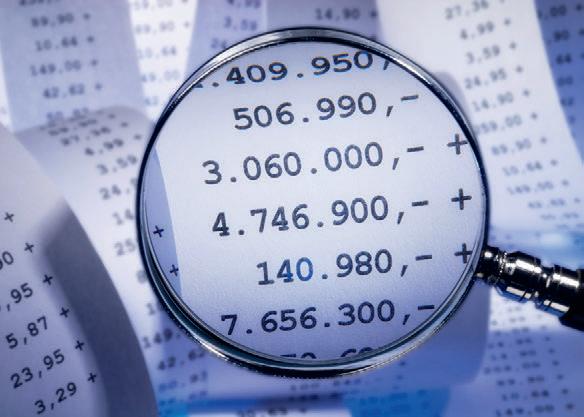
UPCOMING
January
February
Hungary’s November government deficit broke an all-time record, boosted by a government spending spree to win re-election next spring. Economists fear that the upcoming general election will put the much-needed fiscal consolidation on hold.
Hungary recorded an unprecedented monthly budget shortfall of HUF 1,009 billion in November, according to preliminary information published by the Ministry of Finance in December. By the end of November, the country’s budget deficit ballooned to over HUF 3,900 billion, which is close to the annual target that was doubled during the year.
Prime Minister Viktor Orbán gave Hungarians generous financial handouts, including an income tax rebate for families worth USD two billion, as his government faces a closely fought election next year. These handouts have triggered a surge in the nation’s budget deficit, forcing the cabinet to amend its annual deficit target. Hungary borrowed heavily in global markets in 2021 to finance the swelling deficit and bridge a delay in access to EU pandemic recovery funds over a row with Brussels on democratic standards.
Leading stocks gained significantly in 2021, with OTP the biggest gainer. The bank's stock was worth HUF 16,600 on the last trading day of the year, while it closed 2020 at 13,360, up 3,240 or 24.25%. OTP reached its annual and historic high on November 5 at 19,590.
The Hungarian currency, the forint (HUF) weakened in 2021: by 1.3% against the euro (EUR), 9.3% against the American dollar (USD) and 6.0% against the Swiss franc (CHF). On December 31, the forint ended the year at 368.87 forints against the euro and 324.48 forints against the American dollar, while the Swiss franc stood at 355.55 forints.

In 2021, the forint reached its weakest exchange rate against the euro at 372.13 forints on November 23. It was at its strongest against the euro, at 344.91 forints, on June 10.
NEW HUNGARIAN ART AUCTION RECORD
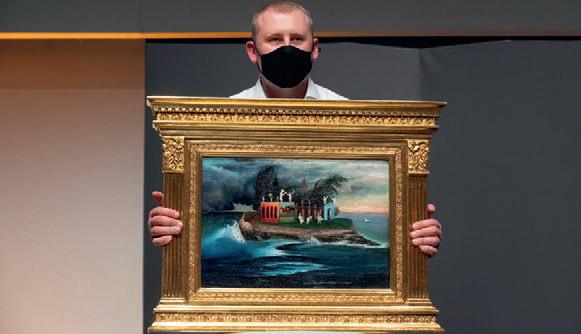
Surpassing all previous Hungarian auction records, Tivadar Csontváry Kosztka's painting ‘Mysterious Island’ sold for HUF 460 million at the Judit Virág Gallery's auction in Budapest, starting from the highest starting price in the history of Hungarian auctions, HUF 160 million.
The Mysterious Island, painted in 1903, is one of Csontváry's most mysterious works, the meaning of the title has still not been deciphered by art historians.
In the painting, dream figures evoke the past and the future on an imaginary island. The possibility of passage between the tiny piece of land and the outside world is hinted at by the motif of a tiny sailboat. The symbolically rich artwork is characterized by intense, warm colors and a brilliant light effect.
The previous record was also held by a work by Csontváry, ‘Trau Landscape at Sunset’. That painting was auctioned at the gallery in 2012 for HUF 240 million. Just over a dozen of Csontváry's hundred or so works are in private collections, Mysterious Island was the seventh Csontváry work to be auctioned in 30 years, and only four have appeared at auctions since 2000.
HUNGARIAN WIN AT THE WORLD ICE CREAM CHAMPIONSHIP

Pistachio Fruit (Frutta di Pistacchio), a creation by Hungarian confectioner Ádám Fazekas, has fetched gold for best ice cream at an international competition held in Bologna, the organizers said. As the Hungarian state news agency MTI reported, Fazekas “blew away” the 11-member jury of experts with the taste and his video presentation, the organizers of the Italian city’s World Ice Cream Championship (Gelato Festival World Masters) highlighted.
The silver went to Carlo Guerriero from Spain’s Cadiz for his creation Creamy Oloroso Wine (Cremoso al Vino Oloroso) and the bronze to Marco Venturino from Italy’s Varazze for his Rose Mouth (Bocca di Rosa) ice cream.
Ádám Fazekas won the competition from among 32 international ice cream makers (gelato artisans). The hosts said they had spent four years attending hundreds of events around the world to select from among 3,500 candidates the finalists to compete for the title 'World Master' in Bologna.
OMEGA ROCK BAND FRONTMAN JÁNOS KÓBOR DIES AT 78
János Kóbor, the Kossuth and Liszt Ferenc Prize winning singer of the Hungarian rock band Omega, passed away on December 6 at the age of 78. The musician was hospitalized on November 9 with new coronavirus infection and was under care there with his condition long thought to be serious.

Born and raised in Budapest, Kóbor founded his first band in high school, and after a couple of small formations, was one of the Omega founders in 1960. In the beginning, their repertoire consisted mainly of Western songs. He also had a degree in architecture from the Technical University of Budapest, but claims never to have worked for a minute as an architect.
Kóbor – known by his nickname 'Mecky' – eventually switched to singing full-time and was involved in the making of all 17 of Omega's albums. He was one of the few successful Hungarian performers who spent his entire career as a member of a single band, with only occasional guest appearances here and there. Besides performing, he worked as a music director, managed a record label and founded a sound equipment rental company.
www.dteurope.com | DIPLOMACY & TRADE | 2022/I 5 photo by LAURENT BLEVENNEC/PRÉSIDENCE DE LA RÉPUBLIQUE, DEPOSITPHOTOS.COM, BSE.HU, BALÁZS MOHAI/MTI, FACEBOOK.COM/FAZEKASCUKRASZDARETSAG DÁVID HARANGOZÓ
NATIONAL DAYS
1Cuba National Day 26Australia National Day
6New
Zealand National Day 15Serbia National Day 16Lithuania National Day 23Japan National Day 24Estonia National Day 25Kuwait National Day 28Egypt Independence Day
company briefs
BUDAPEST AIRPORT CARBON NEUTRAL
received its certificate from Airports Council International (ACI), which also recognizes that the airport operator continues to fulfill its sustainability commitments, despite the impacts of the global pandemic on aviation.
Budapest’s Ferenc Liszt International Airport has been awarded carbon neutral certification for the fourth year in a row, continuing to be one of the 362 airports in the world that operate in a responsible and environmentally friendly manner, fully offsetting the carbon emissions generated by their operations. According to a Budapest Airport press release, the airport management company joined the Airport Carbon Accreditation program in 2011, and during these ten years, it has halved its direct carbon dioxide emissions and reduced carbon dioxide emissions per passenger to one-third. The company recently
Airport Carbon Accreditation, launched by Airports Council International, is the only institutionallyendorsed, global program that assesses the carbon emissions of the world’s airports, through a six-tier certification scheme. The system is based on the fact that airports can be rated 1, 2, 3, 3+ while 4 or 4+ have recently been added, based on their emissions and efforts to reduce emissions, meaning that ACI assesses all airports that join the program voluntarily, regardless of size, category or function.

In line with its sustainability goals of zero carbon emissions, energy efficiency and transport developments, Budapest Airport also joined the STARGATE consortium in 2021, as part of which it undertook, amongst other things, to develop and put in place a cloud-based, paper-free air cargo handling system. The project, led by Brussels Airport, has secured nearly EUR 25 million of support from the European Commission, within the framework of the Green Deal program.
ACG, 'AGENCY OF THE YEAR' AT HUNGARIAN EFFIE AWARDS
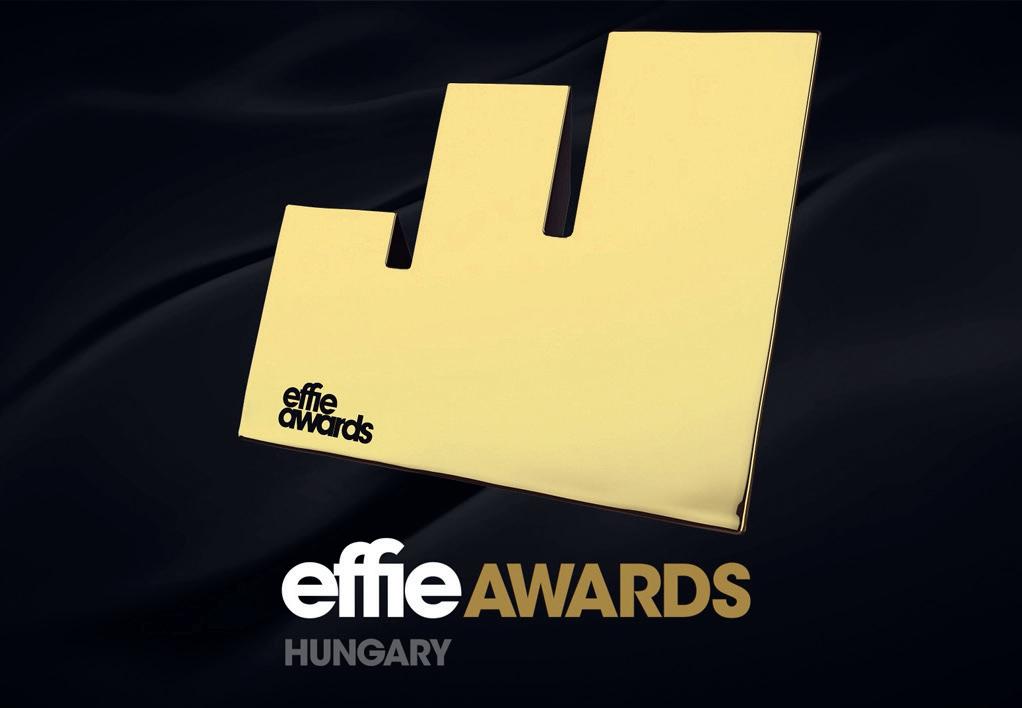
The entry "Soproni - Óvatos Duhaj" submitted by the brewing company Heineken and the ACG communication agency in the category 'Long-term efficiency' won 2021's Platinum Award at the Hungarian round of the annual Effie Awards for best advertising campaigns. ACG turned ten out of its 13 nominations into awards, which made it the 'Agency of the Year' while its client, Heineken Hungária received the 'Client of the Year' award.
The Effie, 53 years old abroad and 20 years old in Hungary in 2021, is the only advertising competition that focuses on the effective achievement of marketing objectives. The two rounds of the competition, which is a global symbol of excellence, saw 59 entries shortlisted in Hungary, 27 of which were judged by a 120-strong jury of professionals.
ROCHE HUNGARY SIGNS STRATEGIC COOPERATION AGREEMENT
One of the largest companies in the healthcare industry, Roche Hungary Ltd., known for its innovative solutions, has signed a strategic cooperation agreement with the Hungarian government. The aim of the agreement is to use Roche's value-based healthcare model to multiply the innovative and personalized therapies delivered to patients in a way that significantly reduces their social costs and benefits the wellbeing of Hungarian patients.
Hungarian patients with innovative therapies that move medicine towards personalized medicine through clinical trials in addition to its products.

ACG won three out of the five gold Effies: 'SoproniÓvatos Duhaj' in the category of long-term branding, 'Rapcity Online Camp' in the category of low-budget campaigns and 'Starting School Together' for the OED in the category of social campaigns. In addition to the three gold medals, ACG's digital team also won two silver medals for the communication of the TheaterTV online platform, developed by ACG's digital team in response to the challenges of the pandemic, and four bronze Effie medals for the Together for Autism Foundation, Sopron and Rapcity.
According to ACG CEO Nikolett Blaskó, "truly successful campaigns are created when client and agency build a brand together in full harmony, in partnership, for the long term. It's a great pleasure when the work that comes out of such collaborations – in addition to being excellent and delivering results – is awarded the highest professional recognition."
Roche is a major player in the Hungarian healthcare market, providing patients with quality of lifeenhancing medical solutions through more than 70 products in oncology, hematology, immunology, neurology and pulmonology, and working to help Hungarian decision-makers develop a sustainable healthcare system through its research and international experience. Roche, which has been present in Hungary for more than 35 years, is providing
The Roche Group is also at the forefront of job creation, continuously expanding its workforce, now employing more than 1,750 people in Hungary, and increasing in 2021 the number of employees at Roche Europe Services Ltd. by 300. As a major player in the business services sector, Roche supports its employees in more than 60 countries from Hungary. In recent years, Roche Europe Service has brought more and more high value-added assignments to Hungary and is working to further strengthen the sector's presence in Hungary. Roche is one of the companies that invests the majority of its revenues in Hungary, which for the biotech company means that three quarters of its annual revenues are reinvested in the Hungarian economy.
AUTOWALLIS’S MOMENTUM CONTINUES
The Hungarian automotive group AutoWallis has reported strong results for the past nine months: the EBITDA of the corporation exceeded HUF 5.7 billion, meaning that the listed company was likely to surpass its yearly plan of HUF 5.5-6.2 billion. The Group generated a revenue of HUF 145.4 billion in the first nine months 2021, with its margin production having grown by nearly 10%, and its EBITDA margin having increased from 3 to 3.9%, according to a press release by the company published in December.

Having closed a strong quarter, the AutoWallis Group is progressing towards achieving the goals outlined in its strategy: the HUF 145.4 billion revenue meant more than doubling its previous performance by realizing a 132% increase compared to the first three quarters a year earlier. Both business units of the Group contributed to the growth, despite the economic environment
having been adversely impacted by the repeated introduction of restrictions in response to the succeeding waves of the coronavirus pandemic, the slowing down of automotive production and supply due to the shortage of chips, as well as the sluggish recovery of the tourism sector.
AutoWallis’s growth was significantly higher than that of the EU or the regional automotive market: the passenger vehicle market expanded by 6.6% in the EU and by 10.8% in Central Eastern Europe, which is the market relevant for the AutoWallis Group. In contrast, the corporation increased its new vehicle sales almost fourfold (by 271%) to 17,587 units, with transactions and acquisitions completed in 2020 accounting for 231 percentage points and organic growth making up 40 percentage points of the increase. The latter figure is in itself several times the average market growth in the region.
6
photo by BUDAPEST AIRPORT, EFFIE.HU, ZOLTÁN BALOGH/MTI, AUTOWALLIS.HU
2022/I | DIPLOMACY & TRADE | www.dteurope.com
company briefs
EMERSON EXPANDS MANUFACTURING FACILITY IN EGER





The American global industrial software and engineering company Emerson has carried out a capacity-building investment in Eger, NE Hungary in order to meet automation needs for global customers. As a result of the project worth USD 14.7 million, a building of 10,500 square meters was constructed, which means new offices and additional production server units in addition to the new plant hall and creates 200 new jobs in the long-term.
MERCEDES BRINGS CHRISTMAS
FORWARD IN KECSKEMÉT
The Mercedes factory in Kecskemét, SE of Budapest, has been shut down, there will be no production until January 12. That is according to an early December statement to the press by MercedesBenz Manufacturing Hungary Ltd. The factory said that they had modified their production plan to adapt to the constantly changing parts supply situation. The start of the usual Christmas shutdown was brought forward from the originally planned date of December 15. There would not have been any production on December 10 anyway, because Friday shifts had not been running since October 18, when a four-day
working week was introduced. "As in previous years, the winter shutdown in 2021/22 at the passenger car and engine plants in and outside Germany will last several weeks everywhere, although start and end dates may vary from site to site," the company said. “The Mercedes-Benz plant in Kecskemét is adjusting its production plan from the 50th calendar week in order to adapt to the constantly changing parts supply situation, and has brought forward the start of the Christmas break accordingly. During the break, maintenance and rebuilding work will be carried out at the plant," they added.


Emerson, headquartered in the USA, is a global technology and engineering company providing innovative solutions for customers in industrial, commercial and residential markets. Emerson has one of the industry's broadest portfolios of fluid control and pneumatic devices that incorporate sensing and monitoring capabilities to improve uptime and performance, enhance safety and optimize energy usage at industrial and food manufacturing facilities, in automotive and transport equipment, and for other applications. High-quality pneumatic cylinders and valves, mainly used for the construction of production
HYDRO TO LAUNCH ANOTHER INVESTMENT IN SZÉKESFEHÉRVÁR
As a result of the development of about EUR 88 million, the large aluminum and energy company Hydro will create 70 new jobs by building a foundry with a capacity of 90,000 tons next to its Hungarian pressing plant in Székesfehérvár, SW of Budapest. Hungarian taxpayers contribute to the costs with about EUR seven million according to a government decision.
lines and industrial applications, are produced in countless variants at the Hungarian site. Thanks to the development, the company doubles its manufacturing capacity in Eger. Their portfolio is expanding with new product families and production was further modernized in the spirit of Industry 4.0. With the investment, the rate of exports continues to increase, reaching 94%.
Emerson Automation FCP Kft., the Hungarian subsidiary of the Emerson Group with a past of more than 130 years, is considered one of Eger's largest employers with 670 employees. During the development, R&D capacities have also expanded by increasing the engineering headcount.


Tata Consultancy Services, Asia's senior software development and service company, which has been present in Hungary for 20 years, will create 300 new jobs with typically high added value in Financial Analysis, Market Research and IT areas over the next two years in Budapest.

Tata Consultancy Services (TCS) is the largest IT venture of India, and at the same time Asia's leading software developer and service provider company, employing over 450,000 employees in nearly 50 countries around the world.



The first global Service Center of TCS was established in 2004 in Budapest. A Digital Competence Center was opened in January 2020, which, by creating 500 new jobs and focusing on digital transformation and complex technological solutions, carries out high value-added activities in IT and cognitive business processes.
The TCS center in Budapest now provides services to ten industries and 60 priority clients. Operations are carried out in the center in 33 languages by employees of 99 different nationalities.
The Hungarian Center covers the entire spectrum of the service portfolio from cognitive business processes through IT Infrastructure to digital transformation services (cloud services, data analysis, artificial intelligence, automation, quality assurance).
The company employs a total of 2,700 welltrained engineers, programmers, developers and economists speaking foreign languages in their Budapest Service Center.
As a result of the development, Hydro will be able to process and recycle all technological waste generated by the company and thus – taking full account of sustainability aspects – create a closed production chain and high added value for its customers.
Hydro, with a history of nearly 120 years, has been present in Hungary for decades, and their factory in Székesfehérvár with six aluminum pressing lines, multiple surface coating technologies, and nearly 300 machines for fabrication, is one of Europe's largest pressing plants primarily supplying



automotive clients. In addition to the production activity, the company also provides business services to Hydro's businesses.



The Hungarian subsidiary has the largest and most modern European extrusion plant in the Hydro Group producing between 30 and 35 thousand tons of scrap metal, which is then shipped to Romania or Slovakia for recycling. The aim of the company is to become a fully integrated site by building a 90,000-ton capacity foundry next to the Hungarian pressing plant. With this, the company will be able to process all internal waste generated on site, so that following the completion of the new investment – contrary to the previous common practice – it will no longer be necessary to transport the waste to Romania or Slovakia.

www.dteurope.com | DIPLOMACY & TRADE | 2022/I 7 photo by
SZILÁRD DUDAR, TAMÁS KAPOSI, LÁSZLÓ TYUKODI/TYUKIFOTO.HU, TAMÁS VASVÁRI/MTI
Diplomacy-n-Trade.ai
11:22:30 TATA’S SERVICE CENTER EXTENDED IN BUDAPEST
1 2017. 02. 27.
BREAK
THE WORLD IN 2021
 BY TAMÁS MAGYARICS
BY TAMÁS MAGYARICS
In fact, the original rhetorical question was used repeatedly in the U.S. presidential elections in the late 20th century with ”four years” instead of ”a year” – and the answer could be decisive in the choice of the voters. We are not supposed to vote right now, but it is a legitimate question, though, to ask whether we are better off now than we were a year ago. Jumping to conclusion, the answer is likely to be overall negative – the most important outstanding issues have not been solved yet, and in a number of questions we cannot really see the light at the end of the tunnel either. International public discourse is still dominated by the pandemic – and it does seem that COVID-19 and its mutations are here to stay for some time. The pandemic, besides its direct health hazards, has deep impact on the nations’ economies, on migration patterns, and on political processes too as handling the pandemic by the individual governments has been extensively politicized. It definitely influenced the presidential election in the U.S. in November 2020, but the lockdowns generated political backlashes elsewhere in the world as well.

More continuity than discontinuity in the U.S.
It is a conventional wisdom that a historically consequential political change happened in the U.S. in November 2020. But did it? Candidate Joe Biden promised practically a U-turn in foreign and security policy: in place of President Trump’s unilateralism and bilateralism a multilateral approach to international affairs; regular consultation and coordination with the

allies; bringing back ’values’ in U.S. foreign policy; and the like. However, what we have been seeing in the past months is more continuity than discontinuity in the foreign affairs of the U.S. As veteran diplomat Richard Haass put it: ’America is Back’ is simply a polite version of ’America First’. In point of fact, the abrupt withdrawal from Afghanistan or the conclusion of AUKUS (Australia, UK., and U.S.) may have fitted into the playbook of the Trump administration too. No meaningful shift can be observed in such key areas as the Iranian nuclear issue, the relationship with China, and even the verbal belligerency of the Biden administration hides a sort of containment policy as pursued by the previous administration.

Nice speeches, outlandish ideas
Tackling climate change has remained high on the agenda, but not much has been done in reality. One has already seen this movie: a large international conference (this past year in October-November in Glasgow), nice speeches, a few commitments (the verification and/or the enforcement of their compliance is another matter), with the major polluters (Brazil, China, India) staying away – and so on. At the same time, it will be interesting to see how some utopian elements of the progressives’ (a.k.a. the far left of the Democratic Party) Green New Deal in the U.S. or the similar – in some cases – even more outlandish ideas of the Ampel Koalition in Germany will play themselves out in the next few years. They may play havoc with the economies of these countries, as well as trigger social and political backlash if these programs get out of control and the Green Jacobins/Taliban have their own ways.
YOU BETTER OFF THAN
Merkel era end and Brexit complications

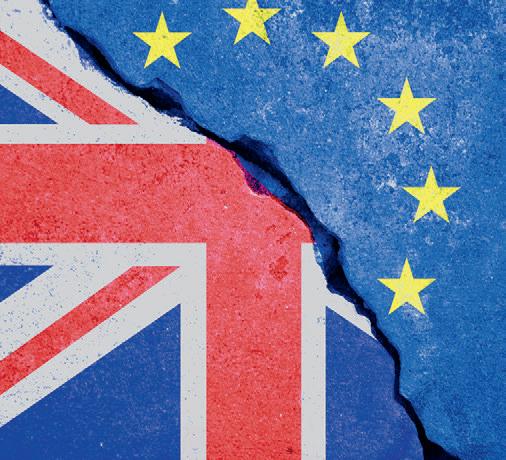
The Bundestag elections in Germany in the fall of 2021 put an end to Angela Merkel’s 16-year long chancellorship. Chancellor Merkel’s legacy is full of contradictions: while staying in power for so long a time is a proof to her skills and political talent, some of her most important policies, including her Willkommenskultur and reducing the popularity of the CDU to historic low, are more than controversial. Moreover, she had her share in the outcome of the Brexit referendum in the U.K. in 2016, if not directly, but indirectly by letting Brussels alienate large segments of the British population with its repeated attempts at power grab and centralization – the latter especially does not sit well with the Anglo-Saxon peoples in general. It is stating the obvious that the complications buried in the agreements between the U.K. and the EU over the Brexit will be living with us for some time to come. This past year, it was the commercial, but ultimately the political relations between Great Britain, Northern Ireland and the Republic of Ireland that had come to the foreground. London’s unilateral interpretation of the Northern Irish protocol does not go down well in Brussels. In a broader context, the fear is that a unilateral reinterpretation of an international agreement may become contagious, especially within the European Union. Besides the Northern Irish question, such relatively minor issues as the migrants and the fishing rights caused repeated frictions between the British and the French.
Complicated world order
These problems may be seen as minor ones in the light of the tension between the West and Russia over Ukraine – the worst-case scenario
is an armed conflict, a Russian invasion of a portion of the territory in eastern Ukraine. Hopefully, things will not get out of control, and the current belligerent statements are parts of a verbal warfare – in fact, some of the more extreme pronouncements may be intended for domestic consumption on both sides. In reality, Russia is not in a position to be able to wage and finance a major war, while there are very few Americans, if at all, who would be willing to die for Kyiv or Luhansk. The other ’800-pound gorilla’ in international life besides the U.S., China, continued its time-honored strategy: trying to project power regionally, especially in the South China Sea and the East China Sea while doing its best to strengthen its conventional and non-conventional military capabilities on one hand, and expanding its Belt and Road Initiative (BRI) into the soft ’underbelly’ of the Atlantic community and into areas which have been neglected recently by the West, such as Africa and parts of Latin America, on the other one. Its reluctance to become a ’responsible stakeholder’ (Robert Zoellick) is not new either; tackling the problem of global warming is one of the best examples of this kind of behavior of Beijing’s. Donald Trump’s bilateral and transactional approach to China did not bring too many fruits; it is an open question whether the Biden administration’s preference for multilateral approaches, in this case the coordination of the Atlantic community’s and Pacific allies’ policies towards China will be a game changer, or these efforts will peter out on account of the different interests of the individual nations involved.
2022/I | DIPLOMACY & TRADE | www.dteurope.com
8 illustration by DEPOSITPHOTOS.COM
analysis
Tamás Magyarics is a foreign policy analyst
”ARE
YOU WERE A YEAR AGO?”
YOU CAN SUBSCRIBE TO OUR NEWSLETTER BY READING THIS QR CODE WITH YOUR SMARTPHONE AND FILL IN YOUR DETAILS

















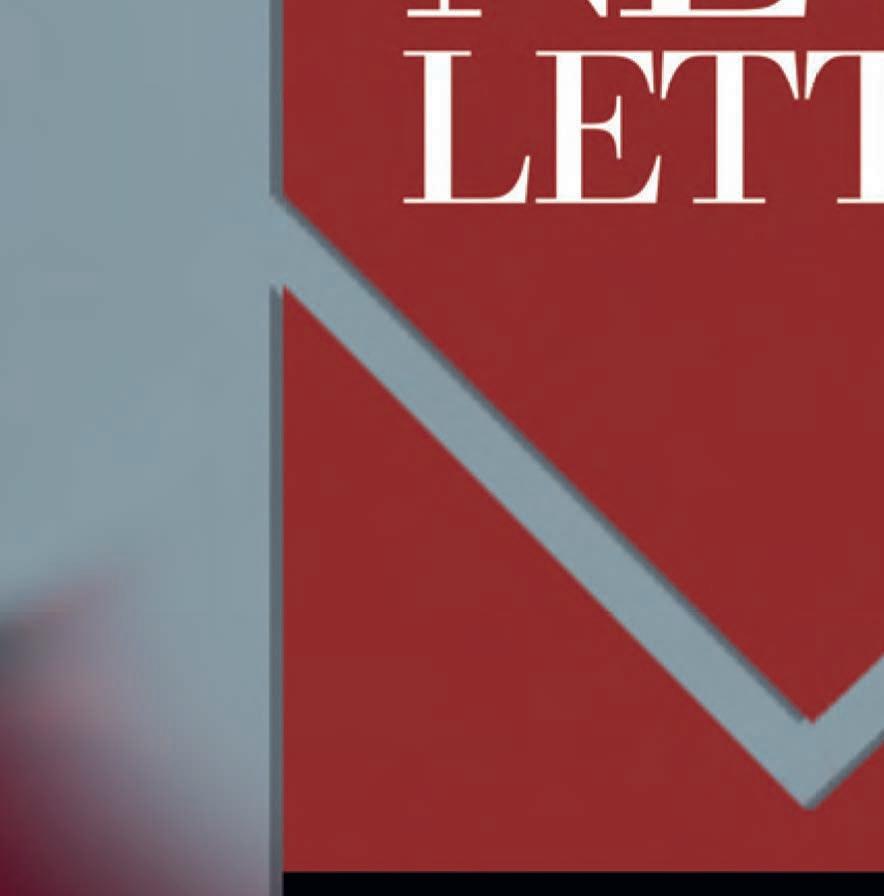


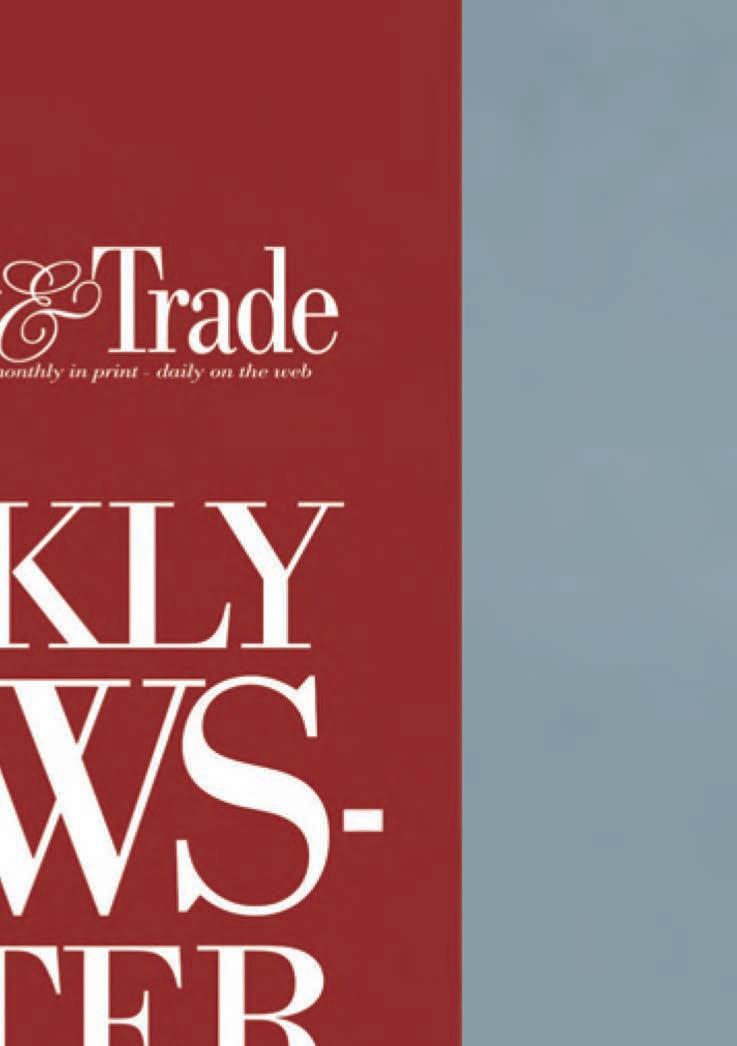



9 JANUARY 2015
RECOVERY AND SLOWDOWN
MAJOR CHANGES TO UNSUSTAINABLE ECONOMIC POLICY CAN ONLY BE EXPECTED AFTER THE ELECTIONS
The trajectory of the Hungarian economy in 2021 was more favorable in terms of GDP growth than expected in the budget for 2021 amended at the beginning of summer. At the same time, equilibrium conditions turned out to be much worse than planned, with inflation and the general government cash deficit soaring, the forint weakening and the external balance turning into a significant deficit, the latest summary of GKI Economic Research Co. published in December states.
economic policy could lead to a lower rate. The info-communications, financial and trade sectors did not fall even in 2020, and by 2022 all sectors will reach their pre-crisis GDP levels, with the exception of tourism, the entertainment industry and agriculture, which has been declining for the third year running. One of the big questions for 2022 is how far Hungarian industrial exports will find their way, which will depend to a large extent on the state of global production chains. Employment is expected to rise by 0.5% in 2021 and 2022, whereas the unemployment rate is expected to be around 4%. Banks plan to increase their corporate and retail lending in 2021 and 2022. At the same time, the rise in interest rates and the full expiry of the moratorium on repayments in the middle of next year foresee a deterioration in the existing loan portfolio and a more prudent demand for credit, with a high degree of differentiation.
Deficit high and increasing, HUF weakening
The research has found that a considerable part of the divergence can be attributed to the excessive use of demand stimulus policies, which can be linked to the elections. At the same time, the escalating conflict with the EU, which led to the withholding of transfers, as well as unfavorable developments in the global economy, such as the energy price hike and the related deterioration in the terms of trade, and global supply disruptions (e.g., chip shortages), also played an important role.
Slowing recovery from the pandemic
The recovery from the crises caused by the pandemic was achieved in 2021 in the sense that the GDP production of the Hungarian economy exceeded its pre-pandemic level. This in itself predicts a slowdown in growth. After an increase of 6.7% in 2021, a GDP growth rate of around 4.7% is expected in 2022. This is also supported by the fact that improving the equilibrium situation necessarily requires a reduction in demand stimulation, including investments that have less impact on households. The government has already taken some small steps to this direction (such as postponing some investments), and the tightening of monetary policy is starting to be more pronounced in terms of more aggressive interest rate hikes and the announced end of government and corporate
bond purchases. If meaningful corrective action is taken, growth could be slower than the current GKI forecast and a more favorable equilibrium situation could emerge, which would be desirable for a sustainable equilibrium. The change in social and economic policy is also justified by the need to resolve the strained relationship with the EU, which is threatening to result in significant financial losses, and for this the Hungarian position needs to be reviewed.
Unsustainable economic policy
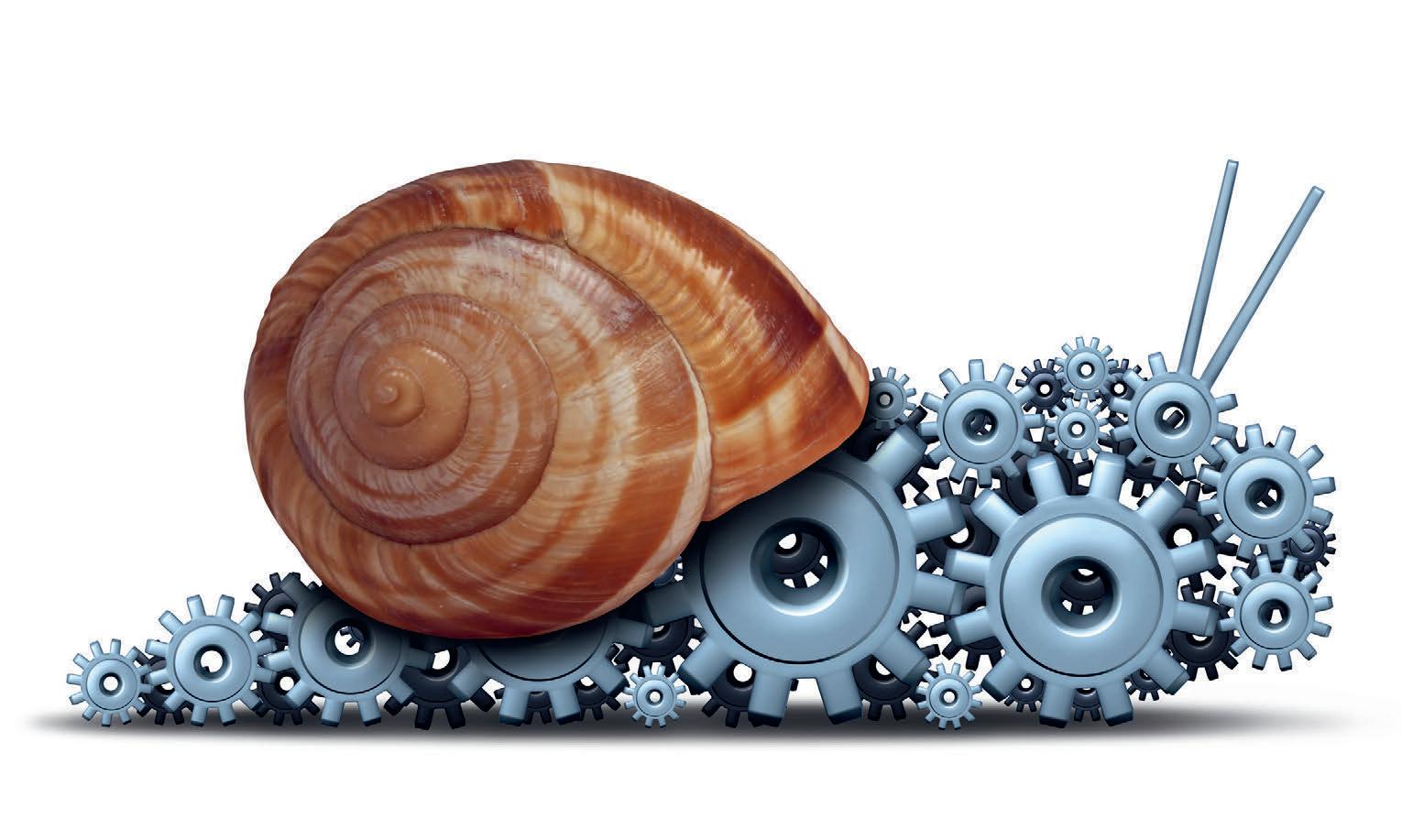
The Hungarian economic policy of the past decade has become unsustainable, but substantial changes can only be expected after the elections. Despite the economic and social problems caused by the fourth wave of the pandemic, the European economic outlook remains favorable, with the EU’s economic sentiment index falling within the statistical margin of error in November and fluctuating in a narrow but high band since August. GKI’s economic sentiment index fell back to its summer level in December. The confidence index for all sectors declined, whereas that for consumers improved after a sharp fall in November. Companies’ willingness to hire is strong but declining, their efforts to raise prices are strengthening, and they are pessimistic about the future of the Hungarian economy. However, households are more optimistic about these issues than they were in November.
Growth on 2020 pandemic basis
GDP increased by 7.1% in the first three quarters compared to the same period in 2020. The role of industry and foreign trade declined sharply in the third quarter, and this is expected to continue in the final quarter of this year. GKI expects economic growth to be between 4.5% and 5% in the fourth quarter, and thus around 6.7% for 2021 as a whole, broadly in line with the forecast of the Ministry of Finance. An increase of 4.7% is likely in 2022. Hungary’s GDP growth is expected to be among the CEE region’s best in 2021, but only weak to medium in 2022, due to the need to address equilibrium problems. In 2021, average real earnings are projected to rise by 3.5%, real pensions (due to the high pension premium and the payment of the first week of the 13th month pension, despite some disputes about its lagging slightly behind the inflation rate) by 4%, real income is expected to increase by 4%, and household consumption by 3.5% (but within this, purchased consumption is growing faster). In 2022, gross earnings will rise by an average of less than the minimum wage, by around 14%, resulting in an increase in real earnings of 8-9%. The real value of pensions grew by 6%. Real incomes will mount by about 7% and consumption by 4.5%. Investments may rise by 8% in 2021 and by 4% in 2022. A radical tightening of
However, the general government cash-flow deficit was already HUF 3,931 bn at the end of November, almost the amount planned for the whole year, partly due to delays in EU transfers. In December, the government decided to postpone investments worth HUF 350 bn, and removed from the agenda the plan to buy Budapest Airport in 2021, which was not included in the budget. It is also possible that the end-of-year spending will be lower than previously thought. The accrual-based government deficit-to-GDP ratio is expected to be around the projected 7.5%, the second highest in the CEE region after Romania. Taking into account the impact of higher revenue outflows and higher inflation, the traditional income redistribution before the forthcoming 2022 elections would lift the 2022 general government deficit by around HUF 1,000-1,100 bn. For this reason, the government has also started some tightening for 2022, with a 0.2 percentage point increase in the special retail tax (which is also unfavorable from an inflationary point of view). It is also possible that other sectoral tax increases could be considered. Cutting back on domestic advances of EU transfers and cancelling some investments could be the main tools for further deficit reduction. This should also help to meet the deficit target of 5.9% of GDP in 2022, which would already be the highest in the CEE region. Inflation will be around 5% in both 2021 and 2022, the euro exchange rate could be around HUF 358 in 2021 and HUF 360 in 2022 after HUF 351 in 2020, while the key interest rate could reach 4.5% by autumn 2022, the expected value of inflation at the end of the year in the favorable case. Although the current account balance is deteriorating at an accelerating pace, the external financing capacity could return to a surplus in 2022 after a deficit in 2021, subject to the settlement of the ongoing disputes with the EU and the disbursement of transfers.
2022/I | DIPLOMACY & TRADE | www.dteurope.com business 10 illustration by DEPOSITPHOTOS.COM
BEST DOMESTIC SEASON EVER
DOMESTIC TOURISM PERFORMANCE IN 2021 EVEN EXCEEDED THE RECORD YEAR OF 2019

At the end of December, in his last podcast of the year 2021, Zoltán Guller, CEO of the Hungarian Tourism Agency (MTÜ), summarized developments of the past year in Hungarian tourism. “Despite the fact that operators were closed in the first half of the year, this summer was the best ever domestic season in the history of Hungarian tourism,” he stressed.
During the interview, reviewed by one of the major Hungarian websites of this profession, turizmus.com, Zoltán Guller said that despite the global pandemic situation, tourism in Hungary grew significantly in 2021. “Demand is changing: domestic tourism has increased, but it may take longer for inbound tourism to recover,” he pointed out.
Beating the 2019 records
He added that "there are also segments of Hungarian tourism where record levels have been achieved. The number of nights spent in hotels
this year is 24% higher than last year, and this is mainly due to domestic traffic. Rural tourism is already performing at pre-pandemic levels."

In the summer of 2021, nearly 15 million nights were spent in domestic accommodation establishments, 22% more than a year earlier and 31% more than in the summer of 2019. This means that domestic tourism performance last year even exceeded the record year of 2019. Tourists spent 50% of all nights in 4-5-star hotels, and the average occupancy rate for fourstar hotels is now 64%, Zoltán Guller stressed. Tourism revenues were also discussed. The

CEO said that in 2021, the vast majority of the revenues, HUF 360 billion, was generated by hotels, 36% more than a year before. All in all, hospitality revenues reached HUF 1,000 billion, up 22% on the previous year.

Slower growth in the capital
In Budapest, however, the recovery of tourism was much slower, although there are encouraging signs: a gradual increase in inbound tourism, with passenger traffic at Budapest Airport reaching 50% of pre-crisis levels in September and 60% in October.

"We expect a strong end to the year, with the city full of Italians and Spaniards on New Year's Eve," Zoltán Guller pointed out. The capital produced only 20% of the total number of guest nights in Hungary, but this is already an achievement, as a year ago the figure was only 14%. The order of sending markets has shifted, with tourists from the Far East and the US being replaced by Germans and visitors from neighboring countries.

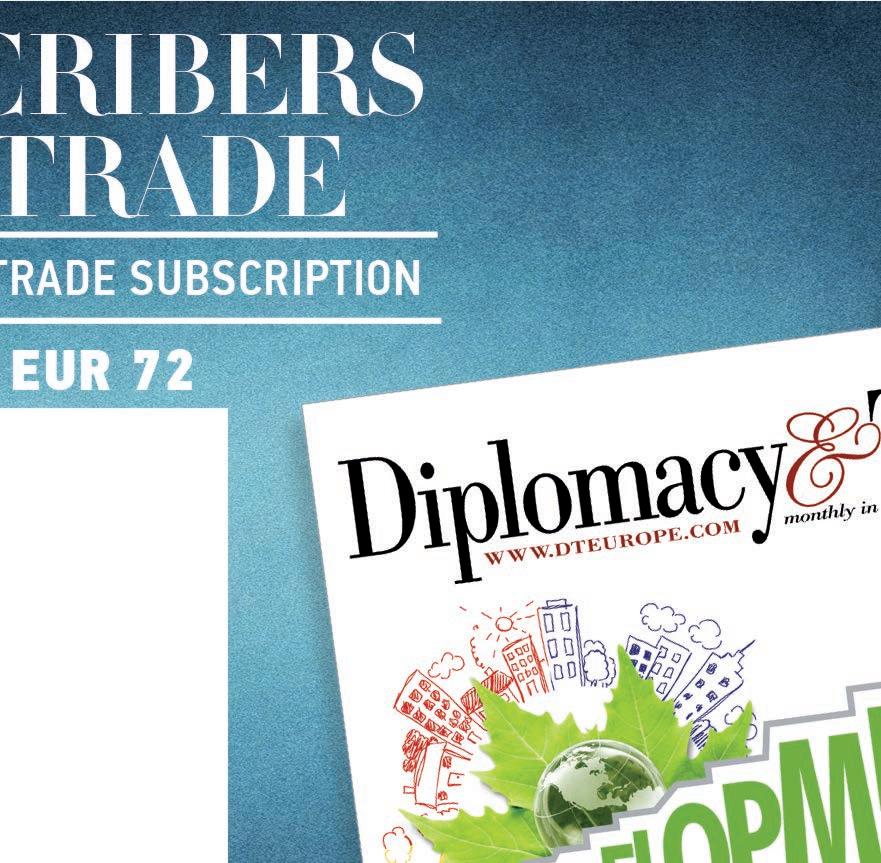
Monitoring tourism postings
Zoltán Guller also highlighted that the MTÜ staff is constantly monitoring social media with the help of artificial intelligence. When planning campaigns, they build on what nationalities of tourists post about what topics. As it turned out, the most active on social media were the British and American tourists, followed by Germans and Italians, who also posted a lot about their trips to Hungary.
PAYMENT BANK TRANSFER

Account No: Unicredit Bank 10918001-00000106-89200006
Please, invoice me at the address:

www.dteurope.com | DIPLOMACY & TRADE | 2022/I 11 photo by MTU.GOV.HU
tourism
Date: Signature: Buyer: VAT Number: Address: Name: Phone: E-mail:
SHOWING THE PAST AND PRESENT OF AVIATION
AEROPARK MUSEUM: THREE DECADES OF SERVING THE PUBLIC INTERESTED IN AVIATION HISTORY
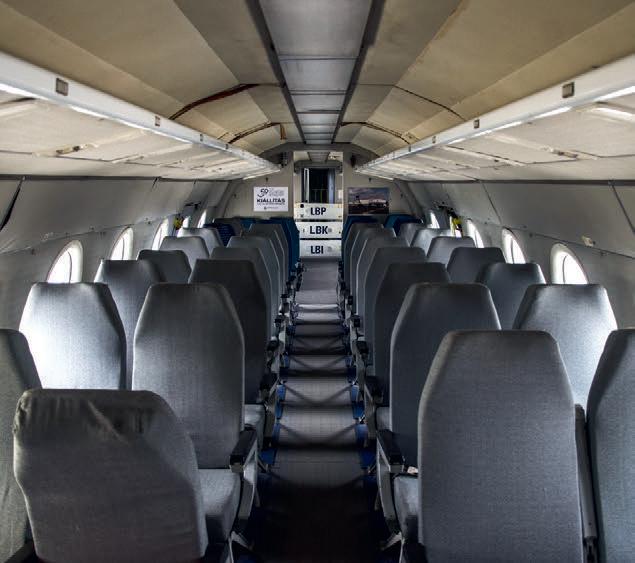
The Aeropark Aviation Museum, located next to Budapest's Ferenc Liszt International Airport, has recently celebrated the 30th anniversary of its foundation. Visitors can learn about the heroic era of aviation, the 66-year history of Malév airlines, and get an insight into the everyday life of modern aviation, behind the scenes of Budapest's and Debrecen's international airports.
The Aeropark Aviation Museum at Ferihegy, located next to the Ferenc Liszt International Airport on the southeastern edge of Budapest, opened its doors at the end of 1991. The foundations of the exhibition center were laid in the second half of the 1970s, after it became clear that Malév Hungarian would be phasing out several of its aircraft, including Il-18s and Tu-134s, in the coming period. The air traffic and airport directorate and the Museum of Transport finally set up an aviation canteen near Terminal 2, the Aeropark Aviation Cultural Center (LKK) informed the state news agency MTI at the end of December 2021.
HBLF FINANCIAL SUMMIT 23

• The Hungarian Business Leaders Forum is presenting its 23rd Financial Summit on the 15th of February 2022.



• This unique economic hybrid conference’s main agenda is the global and regional geopolitical and economic trends through the lens of experts with the aim to understand the role and place of Hungary in the world economy
• Speakers of the conference are from the foreign policy and trade scenes:
• C level expertises

• Respected economists
• Successful business leaders
• Ambassadors to G8 countries
• The opening keynote will be presented by the Minister of Foreign Affairs and Trade of Hungary, Mr. Péter Szijjártó
MEDIA PARTNERS
Past and present presented
The Aeropark, which has been operated and developed by the Aviation Cultural Center since 2013, has become one of the most visited museums in the country, welcoming around 70,000 visitors a year. The site currently features 13 aircraft that present the history of Hungarian civil aviation from 1946 to the early 2000s. In addition to these, a number of special airport ground vehicles can be seen and tried out, from a huge fire engine to an aircraft tractor, a front-end Sigigli or Wartburg. Visitors will not only get a taste of the past, but also of the present, as the Aribus A320neo simulator will give them a taste of how pilots work on one of today's most modern aircraft. The announcement also said that one of the Aeropark's most popular permanent events is the airport visit, which visitors are taken behind the scenes of the Ferenc Liszt International Airport (formerly called 'Ferihegy') in a museum Malév Ikarus bus. An average of 30,000 visitors a year can discover the secrets of Ferihegy. From 2022, the airport tour will also be available at Debrecen International Airport.
15 February 2022 / 9 AM – 3 PM (Online)



2022/I | DIPLOMACY & TRADE | www.dteurope.com aviation 12 photo by DÁNIEL JUHÁSZ
“SUPERPOWERS: IN THE SHADOW OF POWER AND MONEY” Global and regional geopolitical and economic trends through the lens of experts
WITTY LEAKS
witty leaks
IN THIS SERIES, DIPLOMATS SHARE PERSONAL ACCOUNTS OF THEIR EXPERIENCES ON “EXCURSIONS” into Hungarian culture, art, gastronomy & scenery.
RUNNING DIPLOMACY
BY THE SLOVENIAN AMBASSADOR, MARJAN CENCEN

A diplomatic career appears interesting and even exciting to some, but in reality, it is filled with various routines and ceremonies, which are monotonous at times. At the same time, diplomacy requires dealing with a series of tense, if not conflicting, situations in which one must often find carefully measured compromises and solutions, when it is often not possible to say everything one would like. To compensate for such situations, diplomacy also includes social events, most often receptions for significant occasions. This allows some extent of relaxation, but still limits the opportunity of personal expression.
Sporty diplomats
In my almost 30 years in diplomacy, I have noticed some new trends emerging, particularly communication via social media. Another such trend is the growing number of sports activities that bring some diversity and a healthier lifestyle to the lives of diplomats. During the 1990s in Beijing, we used to meet at an ice rink where we skated with families, and the more experienced participants competed in hockey. Occasionally, we even went skiing.
We had similar habits in Moscow and Ottawa. Unfortunately, not all diplomats were able to ski or skate, so it all turned out to be a bit exclusive. When Slovenia held the EU presidency for the first time in 2008, Beijing also hosted the Olympic Games in the same year. Therefore, we looked for opportunities in our diplomatic activities for events that will include other diplomats in the commemoration of these two important occasions. With some consultation, we came up with the idea of organizing a diplomatic run, because, unlike many other sports, practically anyone can take part in it. Running is an activity that people have been engaged in since the beginning of their existence. After a quick review of the response in the diplomatic corps, the idea developed and it was only necessary to find a suitable location, support services, and, of course, prizes that would attract as many participants as possible. In the end, the event was a success and fellow diplomats reminisced about the fun moments they experienced. This was a confirmation for us that we had come up with the right idea that was even welcomed by the Chinese media and officials.
Ambitious plan for Budapest
After 13 years, Slovenia took over the EU presidency again in 2021, but due to the adoption of the Lisbon Treaty, it was executed slightly differently than in 2008. Unlike the previous presidency, my work took place in Hungary, which is one of the EU members; therefore, it was necessary to approach the task differently. A significant new circumstance was also the COVID-19 epidemic, which severely limited all live events. My arrival to Budapest was only two weeks before the start of the presidency when many plans should have been prepared. Nevertheless, in a short time, my colleagues and I put together an ambitious plan of events that we also managed to execute. Budapest is also the city where I went on my first trip abroad in high school in 1976. Even then, I left the city with the realization that it has magnificent architecture, exceptional history, and a multitude of friendly people. With my limited knowledge of English and slightly better German, we successfully communicated, but I decided on my current arrival that I definitely needed to learn at least the basics of Hungarian. The progress is not very fast but my knowledge is improving day by day.
Over the past 30 years, Slovenia as a new country has often had to deal with a lack of visibility, and although this is somewhat different in the case of Hungary, there is always room for improvement. The Slovenian Presidency of the EU overlapped with the Hungarian Presidency of the V4, and it was a lucky coincidence that soon upon my arrival in Budapest, I was invited to a briefing on the Hungarian plans for its Presidency. In the past, Ministerial Commissioner for the Hungarian Presidency of the V4 presidency, Krisztina Varju, was also a diplomat at the Hungarian embassy in Slovenia, so we quickly got into a conversation before her speech. Among other things, she mentioned that a diplomatic run could be organized, and when I told her that we had organized a similar event during the Slovenian Presidency in Beijing, it was only a step towards a new project. We immediately agreed that we could organize a run for diplomats under the joint presidency of the EU and V4. For both of us this was regarded a great way of PR. The implementation of the whole idea was greatly facilitated by the possibility that this run could be organized as part of the annual Budapest Spar Marathon, which would save
a lot of organizational and security tasks and greatly increase the visibility of the event. To my great delight, the idea was also accepted by the Race Director Budapest, Árpád Kocsis. Among other things, he kindly offered us to additionally print the logo of both presidencies on the running shirts and use our slogan ‘Run for a Safe Future’. All participants also received a medal and a digital diploma at the finish line.

Diplomats join the race
The motivation of diplomats to cooperate was a bit more challenging. The first reaction was that they didn’t have enough good runners. It took quite a bit of diplomatic skills and persuasion to explain that it is mainly about socializing in sports and reaching out to the public, who will see that diplomacy, is not just politics and that we diplomats promote sports with our active participation. Even when discussing the distance to be covered by the diplomats, we had to take into account, on the one hand, that the route should not be too long, as many would not decide to participate, and on the other hand, we had to find a distance that was nevertheless a sporting challenge. So, we opted for the 4x2-kilometer relay and obviously, our selection was a success. Despite the fact that the time to encourage participation was less than a month, we managed to attract 21 teams from different embassies October 9 was a wonderful day and the atmosphere at the start was great. We met with diplomats and their family members, as well as Hungarian colleagues at the Embassies, and many met for the first time on this occasion. The organizer made sure that our participants had the same exciting atmosphere before the start of the race as the most professional runners who competed in other disciplines. I also experienced this myself, as I decided to accept the invitation of Árpád Kocsis to run another 10 km individual run in the morning. It is true that I was trying to save some strength for the diplomatic run as well, as it wouldn’t be right for my team to be at a disadvantage due to my fatigue. In the end, the combination proved to be successful, as we achieved good rankings in both performances. According to the feedback, the diplomatic run was obviously successful, as many participants were very satisfied, and some of those who did not attend expressed their regret and hope to do so in the future. There were also quite a few questions about whether we would organize a diplomatic run next year as well. I definitely hope so.
www.dteurope.com | DIPLOMACY & TRADE | 2022/I 13
photo by EMBASSY OF SLOVENIA, RÓBERT ABAI
DIPLOMATS STATIONED IN HUNGARY JOIN THE ANNUAL MARATHON FESTIVAL IN BUDAPEST
The Szivek family grows grapes and crafts wines in Kesztölc, at the easternmost tip of the Neszmély wine region (northwest of Budapest) in a special terroir, at the foot of the Pilis Mountains. The winery cultivates mainly white varieties. Some of its parcels are bio-certified and practically all the vineyards are farmed organically.
The drought last year was a serious challenge. As winemaker

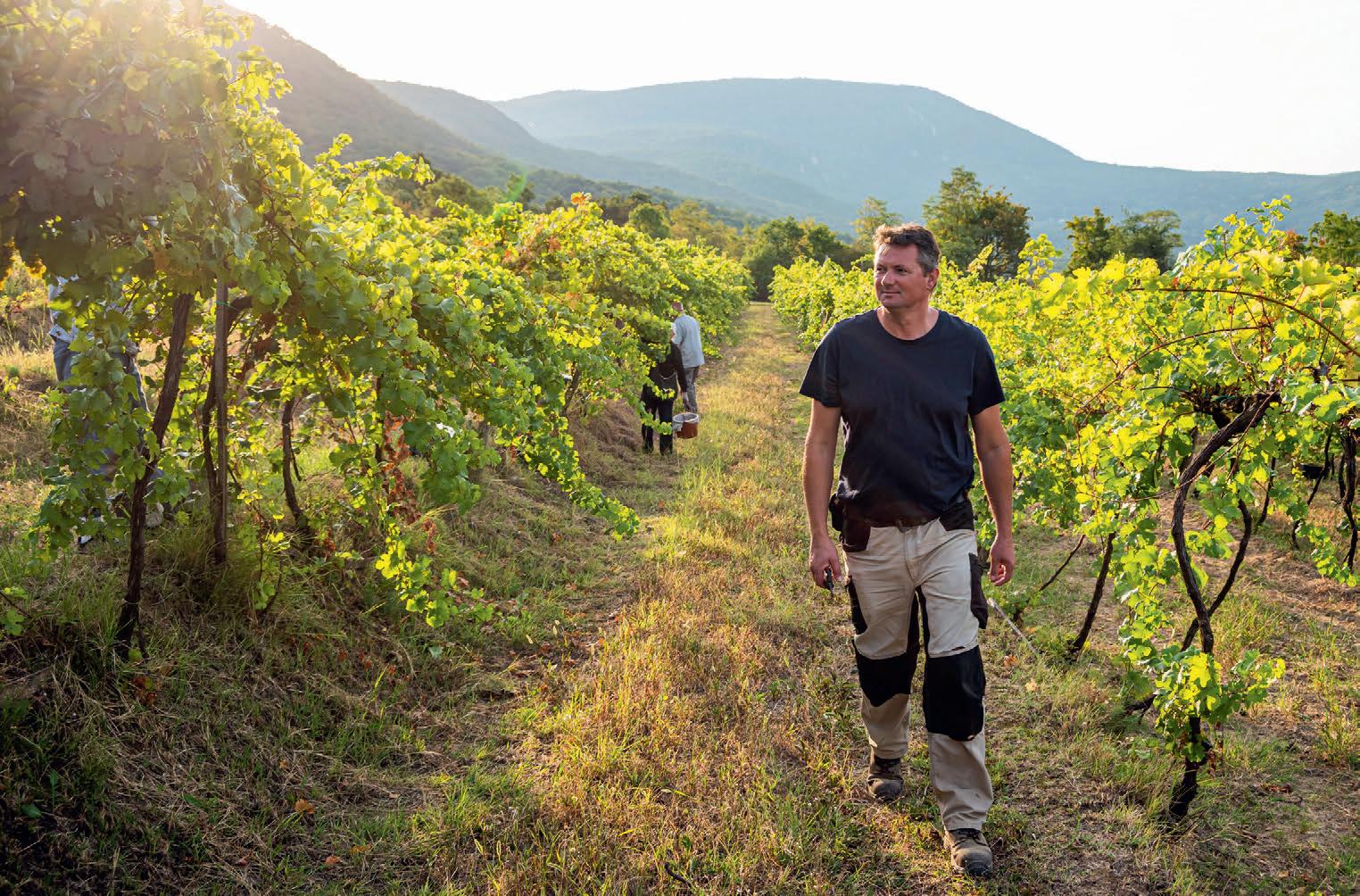
Péter Szivek points out, “during winter, there was little precipitation, hardly any snowfall, maybe five centimeters on two occasions, and not much rain either. Loosening the soil didn’t do much good as there was no precipitation to drain into the lower strata of the soil. In hot vintages, spring tends to arrive early but in 2021, nature was awakened three weeks later than usual. May was wet, shoots started to grow with real gusto, so by the time of flowering, the plants have managed to do a bit of catching up. Conditions at flowering were ideal with no rain or frost. From then on, everything happened at the right pace, there were some rainy days but we were hoping for more.”
A key decision
He adds that “as the ripening process advanced, we were happy to notice that the acidity remained well preserved. Thanks to the chalky bedrock in our vineyards, this is actually rarely an issue. However, by midSeptember, we were still detecting high acidity levels, so we decided to accept the risk of higher alcohol and waited. In hindsight, this was the key decision that led to success as it saved us from harvesting grapes with excess acidity. Overall, the wines of this vintage are somewhat weightier and with higher alcohol than usual but show excellent acidity.”
Compensation for the loss in quantity
Furthermore, the winemaker highlights that a setback at harvest that no one could escape was the drought-induced decrease in the size of the picked berries, which, in turn, resulted in smaller volumes. “For the loss in quantity, we were compensated by concentrated musts with intense flavors. I believe that the mid-term ripening varieties will show good ageing potential, so it seems sensible to lay away a few bottles even for an extended period of time. It was not only the vines that struggled during the drought, pests looking for something to quench their thirst
DROUGHT, PESTS, SMALL BERRIES
LOSS IN QUANTITY COMPENSATED IN THE 2021 VINTAGE IN KESZTÖLC




with were much more frequent intruders in the vineyards than in other years. They have caused serious damage, further decreasing the already low yields. On one of the final days of the harvest, we were shocked to find that some pests managed to get into the fenced off section of the vineyards and caused so much damage that it made harvesting pointless.”
Péter Szivek stresses that with drought and wildlife damage, they lost the chance to produce their Zöldveltelini Trilogy. “In years like this, all Veltliner lots are vinified together. The resulting wine is actually quite promising, it’s evolving nicely. We have planted an experimental vineyard with resistant varieties, i.e Solaris, Sauvignac and special clones of Olaszrizling and Kékfrankos. So far, our expectations have been fulfilled, the stocks show high resistance to disease and as wines, they also hold good promise. This year, the first vintage was vinified as pét-nat and it turned out to be an exciting experiment; as this is a rather limited lot, our plan is to make it available only to our visitors.”
In conclusion, he says the 2021 harvest clearly demonstrated that there is always something new to learn. “The peculiar acid-sugar balance of the vintage posed a challenge for all professionals but unexpected things like these are the engines of progress.”
2022/I | DIPLOMACY & TRADE | www.dteurope.com
14 photo by SZIVEK WINE CELLAR
wine
CANVAS AND CULT. THE ART OF PÁL SZINYEI MERSE


13

THRU FEBRUARY
HUNGARIAN
NATIONAL GALLERY, BUDAPEST
The life’s work of Pál Szinyei Merse, an outstanding master of nineteenth-century Hungarian painting and one of the most influential figures in Hungarian art, is the subject of the latest exhibition at the Hungarian National Gallery. The exhibition of around 120 works examines the connections between the paintings in Szinyei Merse’s œuvre and the cult surrounding the artist. As the evolution of his art and the history of his cult unfold side by side, visitors are offered a new perspective on the artist’s prominent position in cultural history.
The exhibition presents Szinyei Merse’s key works in their Hungarian context and in relation to thematic and painterly parallels from the international (primarily German, Austrian and French) art scene of his times. More than twenty paintings by international artists have been loaned to the show by distinguished public and private collections, including masterpieces by Monet, Sisley, Corot, Courbet and Gainsborough. The exhibition provides not only a rich selection of Szinyei Merse’s œuvre, including several pieces rarely seen in public, but also a detailed overview of his cult, revealed through the works of past masters such as Károly Ferenczy, József Rippl-Rónai and Aurél Bernáth, and contemporary artists including Gyula Konkoly, Endre Tót and Ábel Szabó. Pál Szinyei Merse was a ground-breaking pioneer and the first true colorist in the history of Hungarian painting. During his time in Munich, the young artist studied in the legendary class of Karl von Piloty and could count some of the finest painters in the city among his friends. The works produced in the first period of his career – Picnic in May, Lady in Violet, Snowmelt, Skylark, Balloon – played a key role in the establishment of modern Hungarian art. His chefs d’œuvre are among the best-known paintings in Hungarian art history and have formed an inescapable part of Hungary’s cultural memory for over a hundred years. mng.hu
GILOT100
THRU JANUARY 29


VÁRFOK GALLERY, BUDAPEST
The legendary artist of the Várfok Gallery’s artist circle, Françoise Gilot (b.1921, Neuilly-Sur-Seine, France), celebrated her 100th birthday in 2021. The Várfok Gallery pays tribute to the artist with a largescale, retrospective exhibition that opened on Gilot’s 100th birthday, November 26, 2021. The exhibition, showing works from all periods of the artist’s career in celebration of decades of tireless talent, will include outstanding paintings from private collections, monumental floating canvases, as well as works on view for the first time in Hungary – all securing Françoise Gilot’s place in art history, further demonstrated by the fact that her works are held in renowned public collections such as The Metropolitan Museum of Art in New York City or the Centre Pompidou in Paris.
Françoise Gilot’s painterly career, spanning almost 80 years, is a story of triumph, her oeuvre gradually taking its rightful place over the last decades. She has fought many battles to shed the title of ‘Picasso’s muse’ and to be recognized by the profession as a first-rate artist in her own right. Her art traces its roots back to the revolutionary heyday of the twentieth century where she was in direct contact with such notable personalities of the time as Braque, Matisse, Juan Gris, Paul Éluard, André Breton, Aragon, Cocteau and Robert Capa. The exhibition will also exhibit Capa’s famed image of Gilot and Picasso taken in 1948.
Since 2000, the Várfok Gallery has staged several solo exhibitions of Gilot’s unparalleled œuvre and it is proud to be the only European gallery to maintain a personal relationship with the artist and to show the largest collection of her work available in Europe.
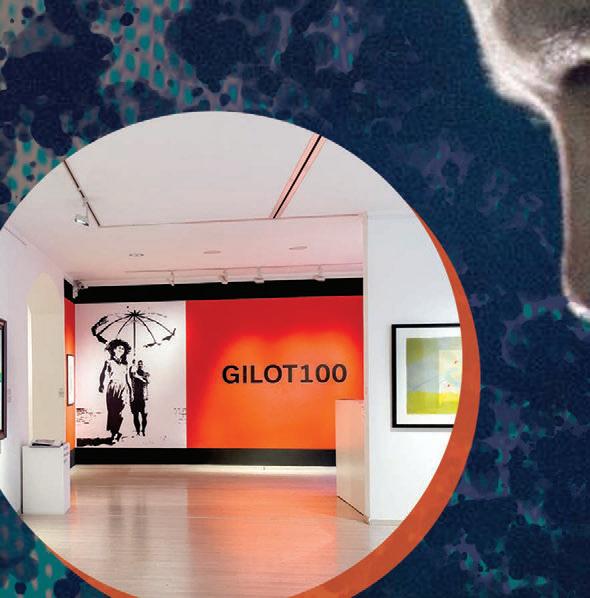
Françoise Gilot is the last eyewitness to the art of the last century. The exhibition honoring her at the Várfok Gallery is a journey back in time seen through her person and her painting. varfok-galeria.hu
RED HOT CHILI PEPPERS
2022 GLOBAL STADIUM TOUR
JUNE 15 PUSKÁS ARENA, BUDAPEST

The Red Hot Chili Peppers 2022 Global Stadium Tour stops in the Hungarian capital in June with Very Special Guests A$AP Rocky and Thundercat.



The 32-city global stadium tour will mark the return of guitarist and all-round cosmic musician John Frusciante to the group, as well as the band’s first ever stadium tour in the U.S. Red Hot Chili Peppers will be performing their career-spanning hits as well as new music from their forthcoming album.


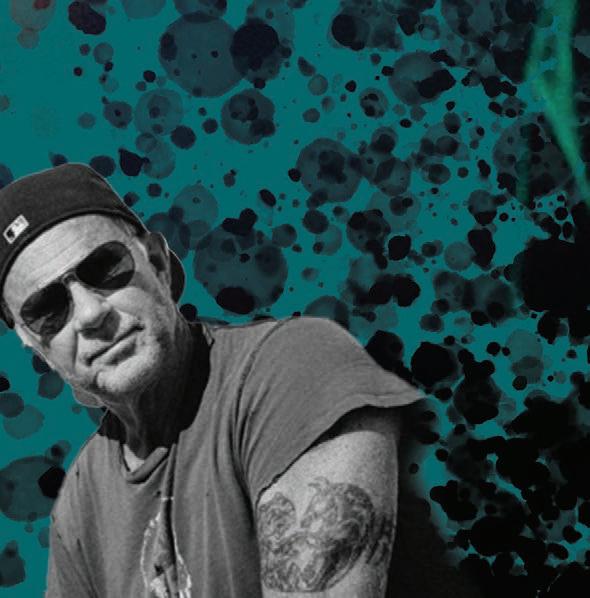

The Red Hot Chili Peppers have long been around, and have not just fallen off the turnip truck, but to a man, they have never been more thrilled, bursting with commitment and purpose, as they are regarding this upcoming tour. They have no interest in resting on past accolades, awards or commercial success, this is a mission, they intend to channel the mightiest spirits, and give everything they’ve got. livenation.hu
ÓLAFUR ARNALDS


JUNE 26 PALACE OF ARTS (MÜPA), BUDAPEST
Ólafur Arnalds, the Icelandic star who plays electro-acoustic music based on classical, minimalist roots and featuring experimentation in a wide array of genres, is returning to Müpa Budapest. People here previously saw him perform in 2018 on the Hungarian leg of his last highly acclaimed world tour. From May 2022, he will present his 2020 album 'some kind of peace' live for the first time, playing first in North America and then the old continent. Müpa Budapest will be his first step on his European tour beginning at the end of June. Live, his intimate record promises to create a sincere and meaningful concert experience.



Ólafur Arnalds exploded onto the contemporary classical pop music scene in the late 2000s. He gained great acclaim with his early records as a songwriter and producer (Eulogy For Evolution – 2007, …And They Have Escaped the Weight of Darkness – 2010), which also provided space for electronic music. He also became a much soughtafter film score composer, achieving widespread popularity with his music for the highly successful television series Broadchurch. He has worked alongside Nils Frahm and plays microhouse as a member of Kiasmos, while his most recent albums have seen more of a lean towards ambient electronica. For obvious reasons, he was unable to present his 2020 album ‘Some kind of peace’ in a live setting for some time. His tour beginning in May 2022 is likely to evoke even greater emotional intensity in both the performer and the audience. Particularly as the combination of his new album and the concert experience promises to produce some of Arnalds's most personal, most revealing and rawest performances ever. In addition to compositions from his latest record, some of his older songs will be given new life, as this time, they will feature the self-playing mechanical piano Stratus, designed by Arnalds himself to create unexpected harmonies and surprising melodies, making each concert a completely unique experience. mupa.hu

15 photo by PICNIC IN MAYPÁL SZINYEI MERSE (1873, OIL ON CANVAS, 127 × 162,5 CM) MUSEUM OF FINE ARTSHUNGARIAN NATIONAL GALLERY, LIVE NATION, VÁRFOK GALLERY, MAXIMILIAN KOENIG FOTOGRAFIE www.dteurope.com | DIPLOMACY & TRADE | 2022/I

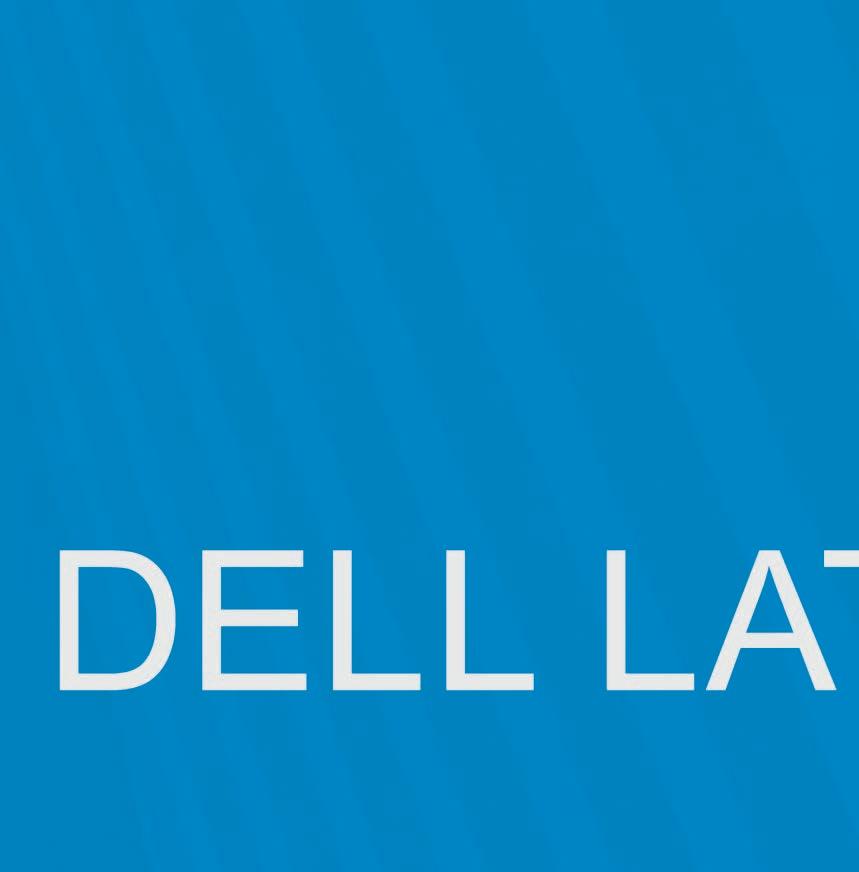

























































 Peter Freed PUBLISHER
Peter Freed PUBLISHER





















 BY TAMÁS MAGYARICS
BY TAMÁS MAGYARICS
































































































